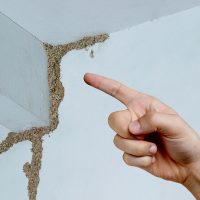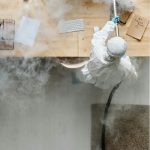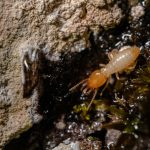A unique approach to shophouse pest control is not only beneficial but also crucial. The distinctive form and dual-purpose nature of shophouses make them particularly susceptible to pest infestations, underscoring the necessity for specialized solutions.
Primarily, pest control in these buildings requires tailored solutions that address their unique challenges without disrupting businesses and residents excessively.
Therefore, in this post, we’ll explore the unique challenge of pest control in shophouses and offer valuable insights on how to ensure they remain pest-free.
The Common Shophouses Pest Control Challenges
1. Mixed-use Nature
Shophouses are typically constructed with ground-floor commercial spaces, such as shops or restaurants, and upper-level living or storage areas. This configuration presents several pest-attracting agents, including food, water, and clutter.
2. Weak Structural Frame
The historical infrastructure of the majority of heritage shophouses has weaknesses in the floorings, wooden beams, and ventilation areas that are prone to infestation by insects such as termites, rodents, and cockroaches.
Additionally, the proximity of these structures to urban drainage and neighboring buildings increases the risk, as pests can easily transfer from one building to another.
3. Hot and Humid Climate Conditions
The humid and warm climate of Singapore provides ideal conditions for the breeding cycles of pests, making them highly resistant to infestations. For instance, cockroaches prefer wet, hidden spots, such as under sinks or in decaying walls, while rats use crevices in buildings to access food storage rooms.
Shophouse Pest Control Solutions
Since pest infestations are not only a nuisance but can also cost money when dealing with the damage they cause, prompt regulatory response, and harm reputation, particularly if customers can spot them on site, you need proactive solutions.
Dealing with pest infestations in shophouses is not a simple task. It requires a comprehensive strategy that combines prevention, monitoring, and controlled treatment, underlining the complexity and seriousness of the task.
1. Proper Inspection
To achieve a long-term pest control solution, you must first address the root causes of infestation, including sanitation issues and structural defects. The inspection is appropriate since the random pest control, even without proper inspection, can be counterproductive or ineffective.
Therefore, begin by thoroughly examining areas that map risk, including kitchen and storage spaces, drain pipes, and structural vents. Importantly, the shophouse pest control technicians should be able to track pest movement and identify trends over time. This will ensure precise interventions, thereby reducing the use of blanket-spectrum chemicals.
2. Structural Repairs
Since shophouses can be made up of old buildings, gaps need to be filled. These are door sweeps, mesh drain grates, and sealing cracks in floors and walls. Soil treatment and physical barriers can prevent colonies from spreading to wooden buildings in termite management.
3. Proper Sanitation and Waste Management
Clutter and food waste attract rodents and other pests. Therefore, proper disposal of garbage, storing food properly, and maintaining the cleanliness of public areas are essential.
Importantly, businesses need covered trash bins and daily empty trash cans to discourage the occupation of pests that have readily available food.
4. Technological Innovations
Current pest control employs technology to provide high efficiency, including real-time detection of infestations. Also, biodegradable treatments, such as bio-pesticides, offer practical solutions with minimal environmental damage.
Therefore, such technology is particularly needed in retail spaces, as traditional shophouse pest control methods are ineffective.
5. Regulatory Compliance
The National Environment Agency (NEA) plays a crucial role in regulating pest control practices, particularly for food-handling and retail establishments.
Therefore, professional pest control service providers should ensure compliance with NEA regulations by maintaining diligent documentation and audit-requisite reporting, thereby preventing shophouse owners from being fined or having their premises closed.
Finding the Right Pest Control Company
Finding a highly experienced and qualified pest control company is crucial. When selecting a pest control company, it’s important to consider factors such as flexibility, expertise, and a preventive focus.
- Flexibility: The pest control services provider should be able to provide services outside of busy hours to minimize disruptions to business operations.
- Expertise: The technicians should be knowledgeable about local pests and how to exterminate and prevent them effectively.
- Focus on Pest Prevention: They should be able to provide regular pest control services, which are crucial for long-term prevention.
Conclusion
Shophouses are unique and require a proactive pest control approach to ensure the buildings remain pest-free.
Lastly, for expert pest control treatment specially suitable for shophouses, contact us today. We provide holistic solutions that combine innovation and functionality to deliver a pest-free environment without compromising safety.








































